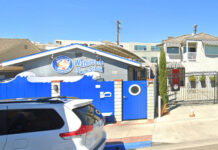To clarify the cargo ship issue in a Sun letter
This is in response to Ron Howlett’s letter regarding “cargo ships and health” (Sun Newspapers, Thursday, March 26). Mr. Howlett quotes a Wikipedia page which apparently contains some inaccurate information.
It is true that most ships carry (but do not “use”) large quantities of ballast water.
It is also correct that ballast water usually is taken in at a port where the vessel has discharged cargo.
It is also true that ballast water taken in port will contain all kinds of “biological material.”
However, all ballast water, by law, is exchanged at mid-ocean before the vessel arrives at our shores.
The ballast water exchange must take place at least 200 nautical miles from the coast and the water depth must be at least 2,000 meters (more than a mile).
So essentially, the ballast water that is indeed discharged near our shores is very pristine, mid-ocean water that poses absolutely no threat to the native eco-system.
Finally, “cargo boats” are not fumigated before they are unloaded as stated by Mr. Howlett.
Certain cargoes in containers are indeed fumigated so as to not spread bugs to our locally produced produce (as an example).
It may be of interest to your readers to know that all oceangoing vessels coming within 200 nautical miles of our shores now are required to consume fuel so low in sulphur that it actually isn’t available at all ports around the world. Needless to say it is quite expensive
. The maximum sulphur content as of Jan. 1, 2015 is down to 0.10 percent.
The vessels you see off-shore these days are mostly container ships (a vessel category strangely omitted from that Wikipedia page).
Their waiting time is a result of the backlog created by an earlier slow-down by the longshoremen (who unload the vessels).
Most of the backlog should be gone in a matter of weeks.
Niels Petersen
Seal Beach
The opinions expressed in Letters to the Editor are not necessarily those of the Sun. The Sun welcomes Letters to the Editor. Letters should be 300 words maximum. Letters should be e-mailed, signed by the author and include the author’s address and phone number (the latter two are for verification, not publication). The Sun reserves the right to accept, edit, or reject letters for any reason. Unless otherwise indicated, all letters sent to the Sun are understood to be intended for publication. E-mail letters to: editor@sunnews.org.












